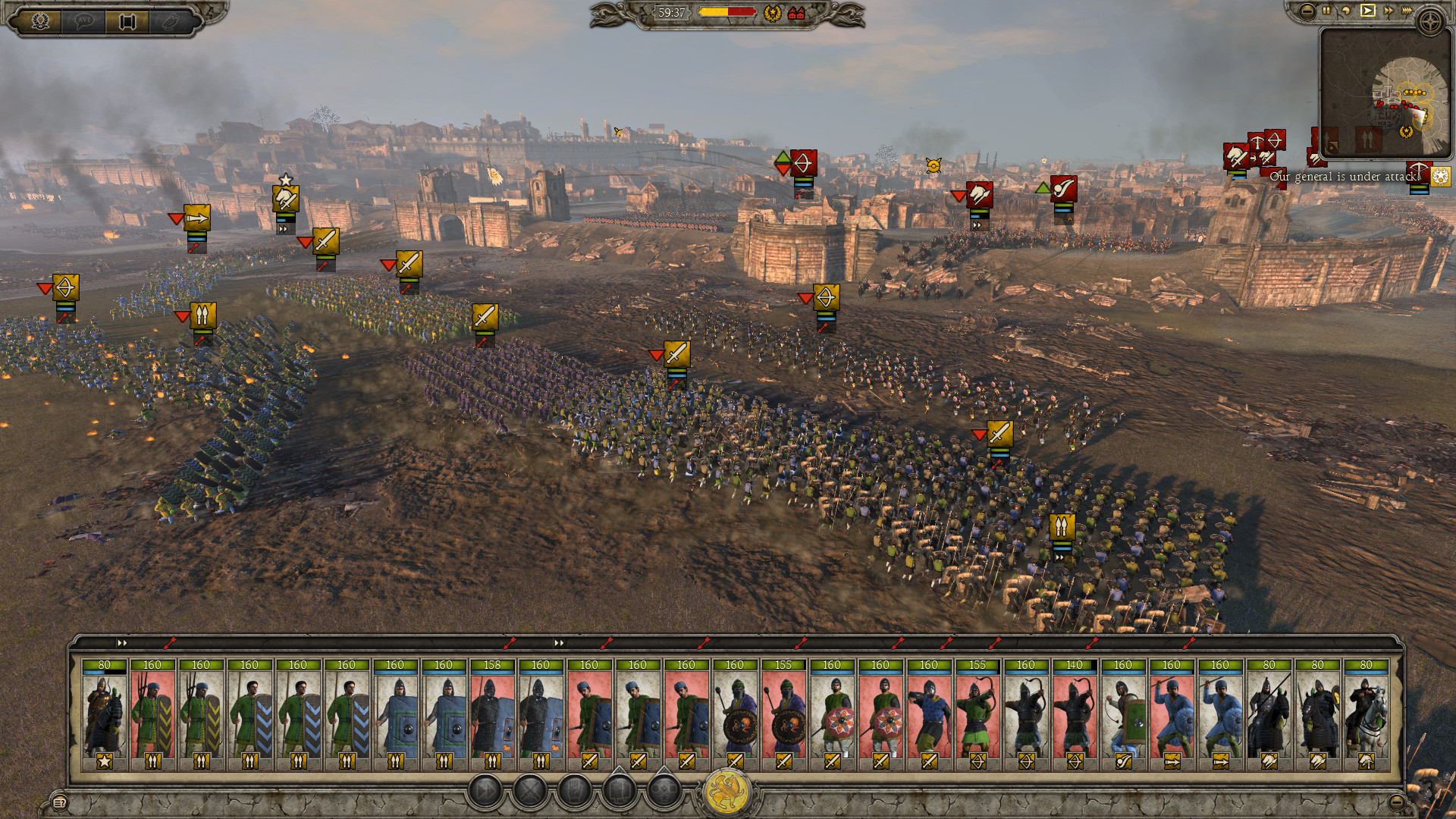Total War Attila
About Game:
Total War: Attila is a strategy video game developed by The Creative Assembly and published by Sega, released on 17 February 2015 for Microsoft Windows, OS X, and Linux. It is the ninth standalone game in the Total War series of video games.
The game begins in 395 AD, during the transition from Late Antiquity to the early Dark Ages. While the title character will be able to become the leader of the Huns, he is not yet in power at the start of the campaign. Due to its setting near the Dark Ages, the game is possibly a spiritual successor to Rome: Total War: Barbarian Invasion.
Gameplay:
The campaign map for Total War: Attila spans from Bactria to Lusitania and from Caledonia to Garamantia in the Sahara. Provinces are groupings of three regions, and each region within a province can be conquered separately. The number of cities and regions is different from Total War: Rome II, but the size of the map is similar. The map of Total War: Attila further extends into modern-day Russia in lieu of the eastern provinces of the Hindu Kush found in Total War: Rome II, shifting the player's attention to the nomadic Huns. The largest settlement in a province is designated as the province capital. These province capitals have more building slots than the other settlements and are also walled at the start of the game, though in a change from Rome II the small settlements can eventually be upgraded to have walls.
At the dawn of the Dark Ages the Roman Empire descends into chaos due to volcanic changes rocking the empire as apocalyptic signs foretell of a great scourge to sweep across Europe. Upon the death of Emperor Theodosius I in 395 A.D., the empire is divided between his sons who each rule a half: Honorius in the West, and Arcadius in the east. Since the days of Diocletian it has become a custom to divide Rome as the pressures to govern the empire have become too much for a single emperor to handle. With the split of the empire both sides face multiple threats on all sides, including internal instability undermining each of the young emperors control as part of the long-term repercussions of the Third-Century Crisis. When the game begins, playing as the Western Roman Empire gamers will face waves of hordes entering their borders as the arrival of the Huns in the east and the devastation they have caused have made them to flee in search for new homes. Since the death of Emperor Valentinian I and the division of the empire, the weaknesses in the West have rapidly begun to show and edge the empire closer to ruin. With depleted funds from centuries of internal mismanagement and corruption, the West is unable to muster an effective army to combat the invaders. While players will start the campaign with vast territories under their command, it will quickly become a game of survival as Rome's legions are stretched to breaking point to protect a decaying empire. The Eastern Roman Empire however has profited from the division to take control of the civilized world as it begins its transformation into a New Empire. With the new administrative capital in Constantinople serving as the gateway for trade between Europe and Asia along with economic reforms the eastern empire has become an economic powerhouse in the game. Yet the Eastern Romans face an initial threat from the Visigoths lead by Alaric I hovering in Greece, able to even make a direct assault on Constantinople itself, and remain wary of the Sassanid threat in the east. If chosen to play either of the Roman empires, gamers will be tasked with saving and preserving the once-great empire, and if possible unite Rome under a single emperor.
As Total War: Attila embraces an era of great change with the people of Europe migrating across the campaign map, Attila adds a new dimension in the form of a faction's religious conversion in the game that brings an array of unique benefits across the player's empire depending on the religion that they choose to favour. The presence of a faction's state religion offers bonuses, including provincial edicts assigned, temple buildings, churches, and even character traits. These factors all play an important role in how dominant the player's religion is over a province. If a province has a population with several religions, it can have a negative affect on public order and thus lead to revolts. Factions also suffer or gain religious penalties when engaging in diplomacy with each other depending on their chosen religious affinity. Should the player choose to convert to a new religion, their faction's overall population must have at least 35% of that religion to convert. To find which religion is dominant in a region, the campaign map may be searched using the religion filter provided. For players who choose Christianity as their state religion, the five cities of Rome, Constantinople, Aelia Capitolina, Antioch, and Alexandria that formed part of the Pentarchy have the exclusive option for their churches to be upgraded to "Holy See" status, which comes with major bonuses. The game includes a total of 13 religions available throughout the campaign map, although the effects of minor religions are not fully understood..
ScreenShots:



System Requirements:
OS: Windows Vista 32-bit
CPU: Intel Core 2 Duo E6850 3.0 GHz or AMD Athlon II X3 455 3.3 GHz
RAM: 3GB System Memory
GPU: NVIDIA GeForce 8800 GTS, AMD Radeon HD 2900 XT or Intel HD 4000
HDD: 35GB Free Hard Drive Space
DX: DirectX 10
Additional Notes: Integrated graphics chipsets will need 64-bit Windows, such as the Intel HD series.



No comments: